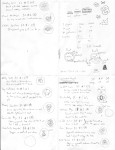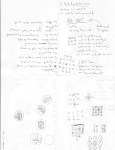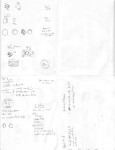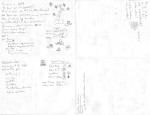Energy Independence: Print & Play
Posted: July 30, 2012 Filed under: Updates | Tags: Competition, Energy Independence, Print & Play, Reddit, Update Leave a commentThis isn’t going to be a very long post, just quickly throwing up the resources for Energy Independence so that I can enter it into the Reddit 48-hour Game Jam. So, uh, here they are.
These cards have been cropped for printing, so they are 2.5″ by 3.5″ inches. I create all of my graphics slightly bigger than that for The Game Crafter, but this game will probably never make it there. Anyway, to play the game, print out 9 of each source card, and optionally, 45 of the backs. You will only need to print the guides once though, since they are only for reference. I didn’t have time to put them together in a big PDF, but I’ll do that after the time limit is over.
You can download the rules here. Although it says so inside as well, you will need to acquire two dice of different colors, as well as a pile of small change to use as currency.
Alright, that’s it for now. Later today I’ll add a little discussion of this game’s development and make an official Game page for it. Maybe after I go to the beach…
An unexpected challenge, and an unlikely success
Posted: July 30, 2012 Filed under: Updates | Tags: Competition, Energy Independence, Print & Play, Process, Reddit Leave a commentI didn’t think I would be doing another 24-hour challenge anytime soon. But suddenly the game-design subreddit decides to go and do a 48-hour Game Jam, and who am I to say no to an offer like that? Unfortunately, I didn’t really find out about it until it was half over, so it became my third 24-hour challenge. Luckily, the restrictions were much more inspiring than the Board Game Geek contest, and I was able to really make some significant progress very quickly.
The theme for the contest is “improving the world.” The mechanical restriction requires the game to involve a 2d6 roll (ideally on each turn). It is also stated that the game must be aimed at children, but still be enjoyable for adults. My response: Energy Independence.
It’s stuff like this that makes me realize how much work I’ve put into this stuff over the past year. I never considered myself an artist, but it’s getting harder to keep calling some of my work “doodles” or “graphics.” Self-congratulatory nonsense aside, these are the energy source cards that make up the core gameplay of Energy Independence. In the upper left corner you can see how the weather affects the production of energy for each source. The rest of the card is totally decorative, since the game is supposed the be for kids. And yes, I realize that geothermal energy isn’t usually a giant hole in the ground, but it’s a tough concept to illustrate for kids. Give me a break.
So gameplay: it’s important. At the beginning of the game, you choose two sources as your starting cards. Then you begin the first year. Each year consists of four turns, each representing a season, always starting with spring. On each turn you roll 2d6, one to determine the weather, and one to determine “demand.” Weather ultimately decides how much energy you produce, and is dependent on both the roll and the current season.

In case anyone is wondering, yes everything is balanced. With such a simple game it’s really easy to make sure things aren’t exploitable. Anyway, you roll the weather die, count up your production, and then compare it to demand. Demand is created by adding the value of the d6 roll to a set “yearly demand,” which starts at 5 and increases by 5 each year. This means that by the third year you will need to be producing anywhere from 16 to 21 energy per season. If the weather cooperates, this shouldn’t be a problem.
The endgame of Energy Independence is simple. After playing through 3 years, the fourth year is an “audit.” So far you’ve used your profits (energy production – demand shortfall) to purchase new power plants. During the Audit, you simply roll through an entire year without purchasing or profiting. All you do is add up the total demand shortfall that you incurred, and the player with the lowest value wins. Very simple, and, well, completely luck-based. I just don’t have it in me to create a complex, skill-based game in 24 hours. This is truly a kid’s game.
I need to do some housekeeping stuff, like write up official rules and prepare some Print & Play documents, but the game is effectively completed from a design perspective. If I were to print or market this game, each card would contain some sort of “fun fact” about alternative energy so that kids could learn while they played. I might even include that as an optional document in the Print & Play resources, although I wouldn’t put it together until the contest was over. So expect a quick little update tomorrow about the fate of this game, including some of the thoughts I had for creating actual strategy that were unfeasible within the time constraints.
I’ve been through the desert on a horse with no name…
Posted: July 22, 2012 Filed under: Updates | Tags: Competition, Playtest, Process, The Game Crafter, The Magnificent Mechanical Mosaic, Update 1 CommentOr rather, I’ve been through a play-test of a game with no name. Here’s the set we played with:

As always, Legos have been used in place of counters and resources. I also only cut out half of the mechanisms, partially out of laziness, but also because it was really helpful to have a reference sheet to explain what they all did without having to rifle through the pile. Honestly, the best part was the Lego Cores. I’m hoping to do some tricky token stuff in order to achieve a raised effect. Spoilers: Four tokens stacked up with dice stickers along the side. I don’t think anyone has actually done that on TGC. Luckily nobody reads this who might steal the idea.
So the actual playtest. Above is the starting position with both dice. Yellow was for production (it matched the color of the energy) and red was the “event” die. We changed the events for the two playtests, and we had some mixed results. I’ll go into that later. After a few turns, we were at this state:

I realize that it’s a very unexciting picture, but it shows that the two major strategies you can start with. Red chose to spend their initial energy on a mechanism, and one that turned out to be game-breakingly good. Green ended up trying to have more gears. The way the game is balanced right now, that doesn’t really work.

This was closer to the end of the game, and our strategies had converged. We had about equal standing, but the awesome mechanism that Red purchased made the result inevitable. Also, we discovered that many of the mechanisms, while fun to read, were basically useless. Green bought the “Uncertainty Engine,” which allows you to roll the production die for a significant cost and likely failure. This turned out to be largely useless, and was purchased entirely for the three victory points, which is sort of the opposite of good design.
That being said, the game had something in it that makes me feel hopeful. We found ourselves wanting to be strategic, and gear placement was not arbitrary even in this broken version of the game. The core rules are basically great, it’s just the mechanisms that don’t work. In the next few days I’m going to concentrate on making new mechanisms and balancing the event die and victory condition. I’m also planning on watching Steam Boy, since I have been told that it’s probably the best steampunk piece of media you can get your hands on. I’m hoping to have a moment of inspiration mid-movie. We’ll see…
Other than that, I’m going on vacation next week, which means I will finally get around to fully updating and publishing The Estate, Punch, and even Manic Mechanics 1.1. Should be a good time.
Steampunk Dice Game: name TBD
Posted: July 18, 2012 Filed under: Updates | Tags: Competition, Process, The Game Crafter, The Magnificent Mechanical Mosaic, Update 1 CommentI’ve been designing this game for about two weeks now. Things are going pretty well in my opinion. I’ve just printed out the materials for the first play-test, and there don’t appear to be any major holes in the idea. That being said, I still don’t have a name. The folder on my computer is called “Steam Gears,” but that’s terrible. I want the name to be simple but interesting, and something that evokes the imagery of the game. I’ll ask around I guess. Maybe someone will have an idea for me.
Above is the first sheet I printed for my play-test. In the game, each player will start with a Core (not pictured), around which they will place four gears (pictured above). In the final version of the game, the gears will have crests on them, not pips, but I made this copy to be used without a custom die. Anyway, each turn the player rolls two dice, one for production and one for events. Whichever crest, or number for now, is rolled with the production die determines which gears will have energy placed on them. So for instance, you could have built a machine with six gears, three of which have the 5 crest. When the production die rolls a 5, you place one energy on each of those gears. A gear can hold up to two energy, and overproduced energy is not placed anywhere else. It is essentially wasted. As the game continues, you will gather energy around your Core, and can then absorb it to purchase more gears, and even mechanisms. Speaking of which…
Here are the mechanisms I have designed so far. Obviously they are doubled on the sheet, because I wasn’t sure if while playing I would want to include multiples of any mechanism. Also, I got frustrated with the art and gave up half way through. Don’t mind that. For the play test I have cut along all the solid lines and folded along the dotted lines to create squares that can fit with the gears. To reference their ability, you will need to turn the mechanism over. Hopefully memorization will kick in after a while. So mechanisms: they do stuff. Firstly, they provide “Prestige” in the form of little octagons in the corner of the picture. These are the Victory Points of the game, and the goal is to collect a certain number of them (also TBD). The mechanism can collect energy from adjacent gears to perform their operations, which is the main mechanic of the game. Intelligent adjacency decisions and energy usage will be the key to success.
There is a lot more to explain, such as the mysterious “bolts” mentioned on a few of the mechanisms, and the different powers of adjacency, but I’m not really interested in typing all that out right now. In the next couple of days the play-test will happen and I’ll take some pictures. That’s it for today.
Steampunk doodles: confusing at best
Posted: July 13, 2012 Filed under: Updates | Tags: Competition, Process, The Game Crafter, The Magnificent Mechanical Mosaic, Work Doodles Leave a commentThere are a few reasons that this post is going to be very short. The first is that I don’t have even the beginnings of a name for my Steampunk dice game. The second is that I’m basically posting 13 pictures depicting my entire thought process over the last two weeks, complete with dates and all my random scribbling. The third is that it’s pretty early in the morning, and I have to be up in only a few hours to go to a mandatory company picnic. Don’t get me wrong, I’m thrilled that I’m getting paid to eat free food and sit around a pool all day, but coming back from second shift then going to an early morning picnic is vaguely lame. Anyhow, I will post soon (hopefully over the weekend) about the game, and I will do some actual explaining. Until then, my crazed drawings will have to speak for themselves. Good luck.
Errant doodles
Posted: July 7, 2012 Filed under: Updates | Tags: Arenacraft, Kung-Fu Deck, Work Doodles Leave a commentBecause the last three days of doodling have been very focused, I’m just throwing up the days from last week that I forgot and Monday’s doodle. Brief explanations will follow each image.
Thursday was a slow day for ideas. Arenacraft was briefly worked on, but really, nothing happened. You can see the perspective drawing on the other side from this scan, and honestly, it was the most interesting thing on that side, which is why I’m not even posting it. The big “DUMB” really sums up the day.
Then Friday happened. And it happened hard. I have several little combat game ideas, and I decided to fiddle with them all at once to look at possible mergers and eliminations. I’ve mentioned Arenacraft and Kung-Fu before, but the other game, Dueling Blades, is actually an existing videogame that I was thinking of interpreting into a board game. The original ideas are two of my favorites, but also two of the least practical I have, so this is about as in-depth as my designs have become.
It’s odd for me to only use one side of the sheet, but for some reason Monday found me very focused on density of doodles. Also, my continuous re-imagining of the Farmer’s Nuisance card mechanic makes an appearance on the top panels. I really hope that I eventually find a home for that idea, so I’m constantly trying to rethink what it could do. The weird little cartoons on the bottom right are from Arenacraft, and the curve on the bottom left is just plain cool. I always loved those drawings in middle school.
That’s it for tonight. I’ve publicly posted enough of my terrible hand-writing for one day.
Scope creep and the 24 hour challenge
Posted: July 6, 2012 Filed under: Updates | Tags: Board Game Geek, Competition, Live Design, Process Leave a commentFor those of you unfamiliar with business jargon, Scope Creep refers to the uncontrolled expansion of an idea, especially expansion that eventually overwhelms the project. In a 24 hour challenge, this can be deadly. Let me first highlight the successes of Wednesday’s efforts.


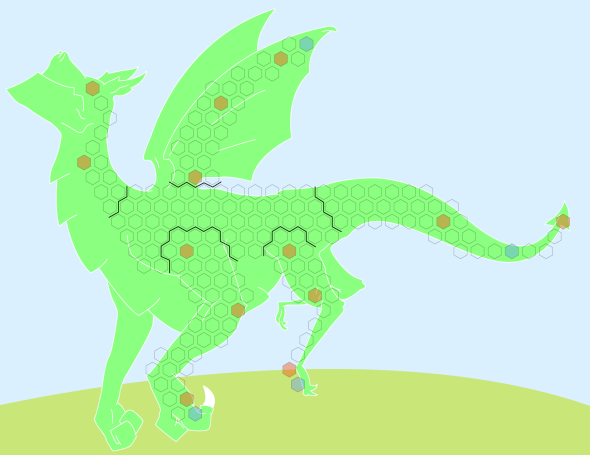
Here you can see the process of creating the board (sort of). The drawings were obviously not done by me, but I was technically in the room, so I can take some sort of credit. Anyway, the final(ish) board is a hex grid overlay on the dragon, and is split into a few distinct sections. Blue spots are entries and red spots are weak points. When you are on the dragon, he will occasionally attack using his limbs, tail, wings, or head, and if you are on that part of the body you must roll to hang on. If you do fall off, the next time there is an attack with any of the entry sections, you may “grab on” and begin your climb once more. Attacking weak points will lower the strength of that area, making it easier to hang on, and you may eventually disable an area by hitting all three. The head and neck area is the most commonly used area, and as such is the hardest to climb. The aim of the game is to attack and kill the highest weak point at the top of the head. Strategically, you can choose to just go straight for it and constantly fall, or to spend some time weakening the dragon before you attempt to make it to the head. The game is meant to be played cooperatively with up to three players, playing as the following three characters.

These drawings are awesome. The Founding Fathers would be proud. Although it never got this far, the idea was to have three different characters with different speeds, hanging strengths, and perhaps some special effects. Washington was to be balanced, Jefferson would be quick and weak, and Franklin would be slow, strong, and really wacky. We were hoping to involve French prostitutes in his play. Sadly, the game never made it quite this far.
That’s about all I can say about this for now. Considering the great art assets I have now, there is reason to hang on to this idea and work on it later. In the next few days I’m going be posting pretty frequently. Work doodling has gotten extreme.
Three hours in, and things are getting weird…
Posted: July 4, 2012 Filed under: Updates | Tags: Board Game Geek, Competition, Live Design, Print & Play, Process 1 CommentSo I’ve been thinking about the contest for a few hours, and I’ve had a good conversation with my friend about it. We’ve ended up in a really strange place, but I like it a lot. I mentioned earlier that I was hoping to have two thematic restrictions, and that I was disappointed that I only have one. So I instead decided to make my own conflicting theme decision: The Founding of America. It’s going to be weird. Here’s a little visual brainstorm.
Imagine this type of game:

But substitute this:

And people like this:

So all in all, a weird game. I have some ideas for the other players (Jefferson, Franklin, etc.), but that’s where I’m leaving it now. Actually, one more thing.
He would totally slay british dragons. Incidentally, British Dragon is a steroid, so that was a weird google search.
24 hours begins… now
Posted: July 4, 2012 Filed under: Updates | Tags: BGDF, Board Game Geek, Competition, Live Design, The Game Crafter Leave a commentJust throwing up a quick post to say that the next 24 hour contest is here. I’m a little disappointed though, because I was hoping to combine this contest with the BGDF design showdown that lasts a week. Just as a reminder, the 24 hour contest has a simple restriction, and the Game Design Showdown usually has both a thematic and mechanical restriction. Unfortunately, I managed to keep myself from seeing either of these things for a few days only to find out that 1. There is no posted Game Design Showdown this month, and 2. the theme for the 24 hour contest is just “dragons.” That’s it. Dragons. I’ve already done a contest about dragons. In fact, this is the second contest I’ve seen this week that is basically a repeat of something I’ve already done. The Game Crafter posted their next contest, and the theme is “Steampunk Dice Games.” Are you kidding me? I just did that!
Anyway, I’m just rambling here. Hopefully I can be inspired by a one-word restriction and will come up with something better than Farmer’s Nuisance or Jargon this time. Happy 4th of July!


















